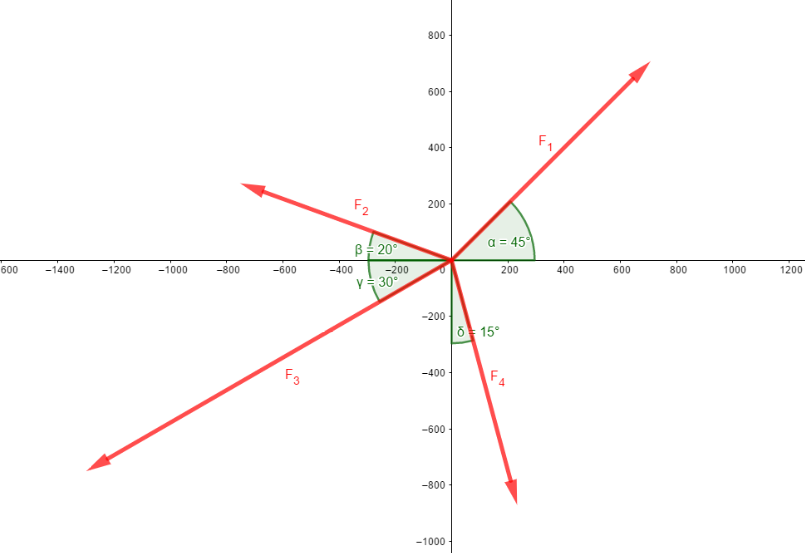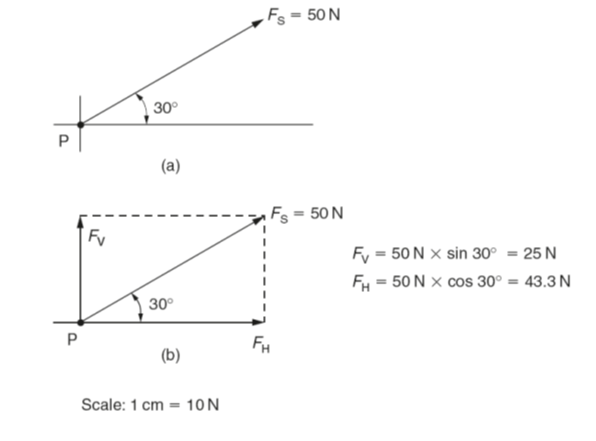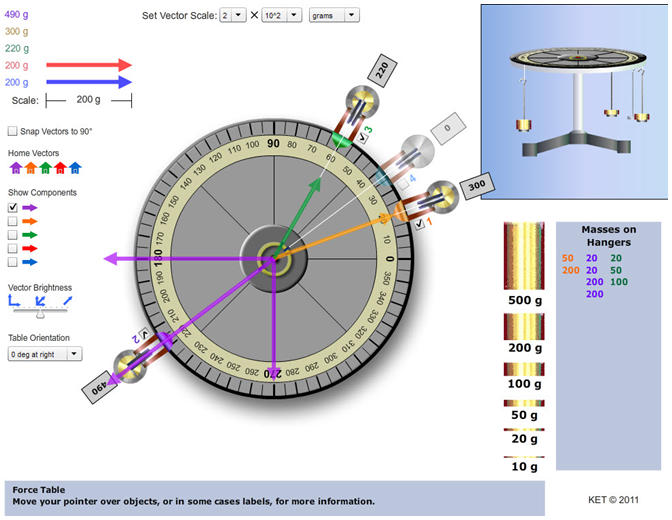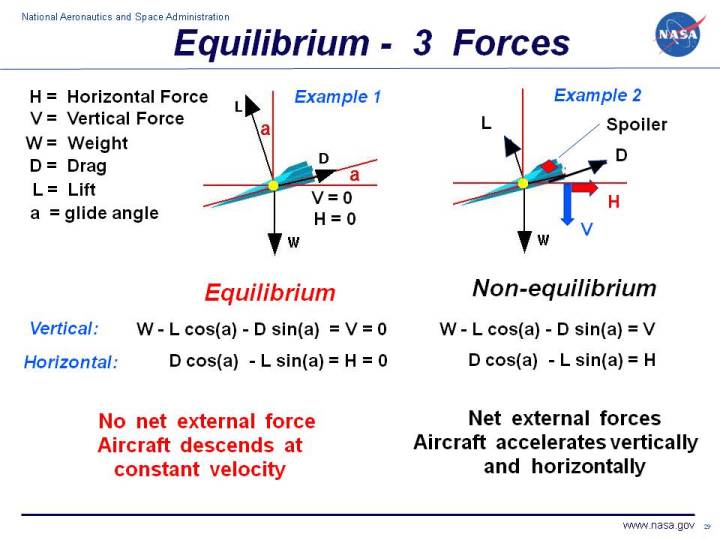Resultant Force Of Four Vectors
As soon as you have clicked on the button Find out resultant the program will show you the necessary parallel translations of the force arrows and then draw the arrow of the resultant red. Four forces are shown on the diagram below.

How To Calculate The Resultant Force Acting On An Object X Engineer Org
42 R F 1 F 2 F 1x F 2x1 F 1y F 2yj F 1z F 2zk.

Resultant force of four vectors. A 40 N force is applied to the wrench. Multiple force acting on an object. B Find the angle between the resultant force and the unit vector.
D x 2 x 1 2 y 2 y 1 2. Find magnitude of the resultant force using the new vector equation and the distance formula. Resultant force force 1 - force 2 780 - 330 450 N to the right Since the force to the right is greater than the opposing force from the left the net force resultant force of 330 N must act from left to right.
Add the vector equations together to get the vector equation of the resultant force. So that the magnitude of. F R could have been determined by simply subtracting the vector length for F 1 from the vector.
4 Resultant force of two vectors at different angles. To find the magnitude and angle of a resultant force we. A Find the magnitude of the resultant of the four forces.
Axis determine the magnitudes of forces. The net force is the vector sum of all the forces. In the figure above P is the initial point of a b has been joined toaat point Q and c is joined to b at R while d is joined to c at point S and PT a b c d which is the resultant of the four vectors.
F y - 40 cos 20 N F x - 40 sin 20 N M O -40 cos 20200 40 sin 2030Nmm -7107 Nmm - 711 Nm. F 2 F 1 F F 1 Resultant In order to add two forces together the start of the second force. Create vector equations for each of the given forces.
For example two forces of magnitudes F1 F2 acting upon a particle have a resultant as shown. 4 Resultant force of two vectors at different angles - YouTube. When we have a force shown with coordinate direction angles all we need to do is multiply the force by the cosine of each angle to get the component.
The head to tail method to calculate a resultant which involves lining up the head of the one vector. The resultant vector is the vector that results from adding two or more vectors together. First lets figure out the x-component of force F_1.
A resultant force is the single force which represents the vector sum of two or more forces. For the situation of the three forces on the force board the net force is the sum of force vectors A B C. The reason why the resultant force is useful is that it allows us to think about several forces as.
You can do it one by one like resultant of first force with second and that resultant with third force and so on. The components of the force in the x y and z directions are Fx Fy and Fz. When added together to obtain the vector length of the resultant force FR this becomes a single vector of 4 cm 5 cm 9 cm long representing a force of 45 N acting at the point P.
Lets start with force F_1. For example if 4 forces act on a block and cause it to accelerate 1 ms 2 south then the resultant force is the force that if applied alone to the block will also make it accelerate 1 ms 2 south. 1 Resolve the force along x and y axes.
The construction can be cleared by a mouse click on the lower button. If you want to know the total force which is exerted on the body you have to carry out a vector addition. Looking at the diagram we can see that there is a 60 o angle between the positive x-axis and force F_1.
Methods for calculating a Resultant Vector. The beam is to be hoisted using two chains. There are a two different ways to calculate the resultant vector.
Assuming that your question meant four forces acting in four directions on the same particle then to find the resultant force you should take a vector sum of the four forces. The resultant of two forces F1 F1xi F1yj F1zk and F2 F2xi F2yj F2zk is the vector sum of those forces. That is the net force is the resultant of all the forces.
It is the result of adding all the forces together as vectors. Weight - a force vector magnitude w mg which is in the direction of gravitational acceleration g down toward the center of the Earth Net Force - the resultant vector that is the sum of all forces being applied to an object. The moment of the force at O.
Acting on each chain and the angle of. 2 Determine M O using scalar analysis. If the resultant force is to be 600 N directed along the positive.
One method of determining the vector sum of these three forces.

Find The Resultant Force And Direction Of 4 Force Vectors Youtube
Vector Analysis Applications Read Calculus Ck 12 Foundation

Resultant Force Vector Diagrams Of Forces Graphical Solution

How To Calculate The Resultant Force Acting On An Object X Engineer Org

Force Vectors Phy621 Gillis Ppt Video Online Download

The Force Table Vector Addition And Resolution

How To Calculate The Resultant Force Acting On An Object X Engineer Org
Lesson Explainer Resultant Of Coplanar Forces Nagwa

Calculating Resultant Forces Vector Diagrams Graphs Work Done Calculations Equilibrium Parallelogram Of Forces Tension Vector Forces Gcse 9 1 Physics Igcse Revision Notes

Module 4 Net Force And Vector Addition Per Wiki

Calculation Of The Resultant Force Mechanics Exercise And Solution
Module 4 Net Force And Vector Addition Per Wiki

Calculating Resultant Forces Vector Diagrams Graphs Work Done Calculations Equilibrium Parallelogram Of Forces Tension Vector Forces Gcse 9 1 Physics Igcse Revision Notes

Calculating Resultant Forces Vector Diagrams Graphs Work Done Calculations Equilibrium Parallelogram Of Forces Tension Vector Forces Gcse 9 1 Physics Igcse Revision Notes

Calculating Resultant Forces Vector Diagrams Graphs Work Done Calculations Equilibrium Parallelogram Of Forces Tension Vector Forces Gcse 9 1 Physics Igcse Revision Notes





Post a Comment for "Resultant Force Of Four Vectors"